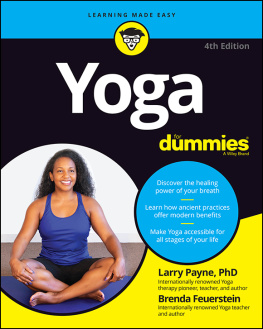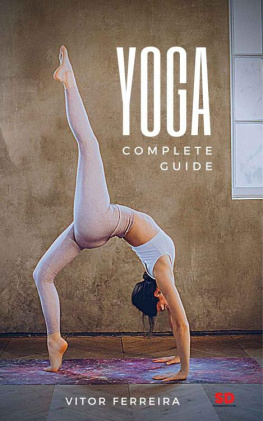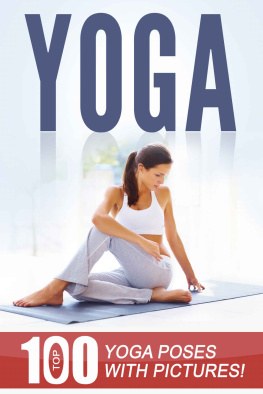Yoga is not just a form of exercise. When it developed in India thousands of years ago, it was intended as a path to spiritual enlightenment. In fact, the word yoga means to join together. It uses poses, breathing, and meditation to unite the body and mind, and brings (among many other health benefits) a sense of peace and well-being. In yoga, mind, body, and spirit are considered three inseparable parts of the whole.
Feeling good is enough encouragement for many to participate in the practice, but if youre suffering from the chronic stiffness, pain, and discomfort of arthritis and related conditions, there is even better news: yoga can do you a world of good.
It sounds counter-intuitive. When youre in pain, you dont want to think about getting down on the floor and contorting into all those unlikely positions. But that is the ideal time to begin. Many poses are gentle and easy, and still deliver benefits. If you spend some time on those, soon youll be ready for some intermediate poses. Its a process, and remember that you dont need to do any of the poses perfectly for them to help you.
Yoga is for almost everyone just have a quick talk with your doctor if you have any concerns. After that, all you need to do is study the poses, set aside some time for yourself, and try. You will soon find your flexibility and strength increasing, and youll start to see some of the many, many other benefits of yoga.
The Benefits of Yoga
Yoga for the Body
Yoga poses encourage both strength and flexibility, but because the practice honors the person as a whole, you always work at your own pace. This is what makes yoga perfect for arthritis sufferers you perform the poses within the boundaries of your own ability and comfort. When youre starting out, you might have some muscle groups that are weak, and thats fine. Gentle effort is all thats required to begin strengthening them. Youll also have stiff places you might not even be aware of, and its a rare treat when you find a stretch that eases them.
For arthritis sufferers, the main benefits of yoga are improved strength, flexibility, and balance. Muscle strength is important because strong muscles can help to support and take strain off the joints. Flexibility in the joints will give you a better range of motion and improve your comfort, both when youre awake and when youre trying to sleep. And balance, largely a product of the first two, means youre less likely to suffer a painful injury that will take time to heal. All of these lead to an increase in mobility, and a reduction in pain.
So yoga soothes and fortifies the body, but there are a host of other ways it helps you. The practice has been shown to improve brain function, lower blood pressure, improve circulation, and build lung capacity. Many twisting poses aid digestion, and help with bloating and discomfort caused by the continued use of painkillers.
Inflammation causes or exacerbates many health problems, including types of arthritis. While short-term or sporadic yoga practice does not help with inflammation, there is some evidence that it can help, if youre dedicated. In 2010, Janice Kiecolt-Glaser, PhD, conducted a study at Ohio State University, Columbus. She measured the levels of proteins linked with inflammation in the blood of yoga practitioners. She found that newer participants had higher levels of these proteins than those who had been doing yoga for a while; however, there were no immediate changes in these levels in the short term. She notes that the people in her study were similar in terms of age, body type, and health habits.
Whether it was the poses, the exercise, the breathing techniques, or the meditation, its encouraging to note that the participants also reported feeling better emotionally. Yoga will sometimes relieve the pain, but even if it doesnt entirely, it does help with your frame of mind. A good outlook has been shown to decrease your experience of the discomfort, and give you the fortitude to withstand it better.
As weve said, yoga brings us into touch with ourselves, body, mind, and spirit. It encourages self-care, and makes us more aware of how our bodies are feeling. This awareness can lead to a change in other habits as well, such as eating healthier, or getting more sleep. These things in turn contribute to your overall health, which reduces your pain and makes you stronger in both body and mind.
Yoga for the Mind
Yoga works on the nervous system, and it also stimulates our glands with its twisting and stretching. This is how its able to help us feel more relaxed and at ease, reducing stress and anxiety and bringing emotional comfort as well as physical.
Part of the reason for this is that the slow, deliberate breathing techniques we use in yoga serve to distract us from the hundreds of trivial thoughts that run through our minds. When we pay closer attention to our inner self, we are able to think more clearly, and this makes us feel calmer. The more time we are able to spend in this calm state, the better able we are to detach from the external tensions affecting us.
Meditation has been shown to reduce stress, and this is especially important for people with arthritis and related conditions. Not only are you dealing with the regular problems of daily life, like bills, deadlines, appointments, and obligations, but you have an extra layer added by chronic pain. Now youre dealing with physical discomfort, loss of sleep and fatigue, physical limitations, job complications, and maybe even the loss of your independence and self-confidence.
Because of these extra physical, real-life challenges, its especially important that people with arthritis pay particular attention to self-care, both physically and emotionally. Setting time aside for yoga will help you accomplish both.
Part of the challenge of dealing with anxiety is calming the body, because it is difficult to settle the mind when youre experiencing physical stress responses like shallow breathing, elevated heart rate, and sweating. Some people dont even realize when this is happening; they only know they feel terribly agitated. The regular practice of yoga teaches us to be self-aware and reach a state of calm more quickly and deliberately, through regulating the breath, and focusing the mind inward. Once the body begins to settle down, the mind can as well. As we have said, yoga addresses mind, body, and spirit as a whole.













